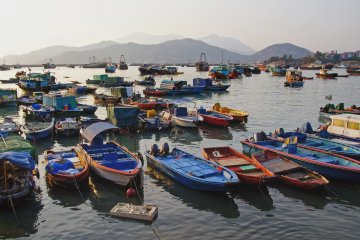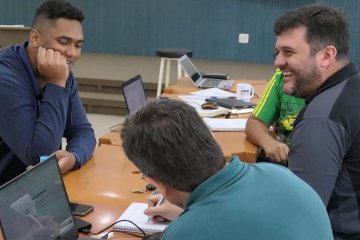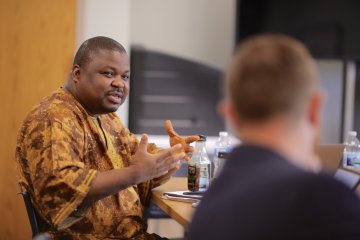Mission Beyond the Pacific
 Patrick J. O'Banion
Patrick J. O'BanionEditors' Note: This article is the second in a four-part series exploring how diaspora missions is not new. We have lessons to learn and examples to follow as we minister to and through the immigrant communities among us. (See also part one.)
The Presbyterian Church founded the Japanese Presbyterian Mission in San Francisco in the 1880s. Their immediate goal was to reach the issei—Japanese immigrants to North America—who had recently begun to appear in large numbers along the California coast.
Their arrival was an unintended consequence of international politics and global commerce. American Commodore Matthew Perry and his fleet forced Japan to “open” itself to the Western world in 1853. The opening went both ways, and thousands ended up coming to the United States via the West Coast. Most imagined themselves as temporary transplants. They planned to find work, make money, save up, and go home.
Called to Stay
In July 1886, the Presbyterian Board called Dr. Ernest Sturge to serve as missionary to the Japanese in California. The Sturge family, formerly medical missionaries to Thailand and China, were on home-leave in San Francisco recovering from cholera. They thought they might continue their medical ministry among the Chinese in the Bay Area, but that work was already overstaffed with doctors.
Instead, they were shuffled toward the Japanese mission. Sturge worked tirelessly against anti-Japanese discrimination in the U.S., made multiple visits to Japan, and learned the language. He respected not only the people to whom he was called but their culture as well, even publishing a collection of sermons for “samurai for Jesus.” On the occasion of his fifteenth anniversary of work at the mission, friends published a volume of his poems and addresses. A recurring theme is he appreciated all things Japanese. This attitude earned the admiration and affection of the issei.
Sturge also knew that his skin tone and bushy mustache counted against him in this work. He was and would always be something of an outsider, both physically and culturally. To be sure, he sacrificed selflessly—the epitaph erected by Japanese friends noted his willingness even to give his own home over to their use. But he recognized that Christian leadership had to arise from within the Japanese diaspora community for the mission to grow and flourish.
To believe in Christ, they needed to hear him preached, preferably by issei preachers who could seamlessly communicate and apply gospel truths in their heart language as cultural insiders. So Sturge devoted part of his energies to training some of the first ordained Japanese clergy at the San Francisco Theological Seminary, which also served as the headquarters of the mission. Sturge sent these co-laborers out to plant a series of fourteen missions up and down the West Coast.
One of them in Wintersburg Village (now Huntington Beach) was founded in 1904. It constituted the first effort to reach the Japanese population of Southern California. The neighboring Presbyterian Church in Westminster threw its support behind the effort. Rev. Hisakichi Terasawa, a Japanese Episcopalian minister formerly of Osaka but laboring as part of Sturge’s mission in San Francisco, was dispatched to organize the early work. The community of Japanese chili pepper and celery farm workers, mostly bachelors with nowhere else to go and not much else to do, began meeting in a barn on Sundays for worship and fellowship.
In late 1910, a manse and sanctuary with space for twenty-five was dedicated as the Wintersburg Japanese Presbyterian Mission, and Rev. Joseph Kenichi Inazawa, a former student of Sturge's at the San Francisco seminary, was called as founding pastor.
The church sat on a half-acre of property owned by Charles Mitsuri Furuta, the first Japanese baptized in Orange County. It had been funded by the combined efforts of the congregants themselves and the members of nearby Presbyterian and Methodist congregations, who recognized the importance of reaching their neighbors for Christ. They wanted to see conversions and discipleship among the issei but also hoped that reaching them might promote kingdom growth in Japan.
When Sturge tried to communicate his vision for what these little missions among California’s Japanese diaspora community might become, he challenged his readers to expand their horizons beyond the West Coast of the United States. In order to see the significance and potential of diaspora ministry, they needed to look “beyond the Pacific.” So do we.
“In order to see the significance and potential of diaspora ministry, they needed to look “beyond the Pacific.” So do we.”
The Work Is One
Sturge explained: “The work at home and abroad is one. Whatever we may do to make our own land more Christian will influence other countries.” And sure enough, Sturge reported in 1895, some who converted and matured as believers in Orange County saved their money and returned to their homeland, “to exert a helpful influence in the cause of the Master” as ministers, leaders, and members of the church there. But many more ended up staying. They put down roots and built a community.
The Wintersburg Mission continues today, more than a century after its founding. Its members weathered racial prejudice, discriminatory legislation, and the internment of more than eighty members—including pastors and elders—during World War II. But the Lord sustained them, and they emerged stronger than ever. In 1930, they dropped the word “mission” and particularized as an independent Presbyterian congregation. In 1965, they relocated to Santa Ana to accommodate a growing congregation. Nowadays, Wintersburg Presbyterian Church is the largest Japanese-American congregation in the United States and a force for missions at home (especially among Orange County’s Asian-American populations) and abroad, supporting kingdom work in Japan and around the world.
There’s a two-part lesson worth learning here about diaspora ministry. First, as Sturge said, this work requires broad vision. A few enclaves of poor celery farmers may not have seemed likely to yield much of a harvest, but by “looking beyond the Pacific” Sturge and others imagined what the Japanese Presbyterian Mission might become. Our vision for the nations among us calls for an equally expansive horizon as we look toward that day when the earth will be filled with the knowledge of the glory of the Lord as the waters cover the sea (Habakkuk 2:14).
But second, if the goal and value of diaspora ministry are clear, we must remember that our return on investment may not match expectations—and that’s not a bad thing. The Japanese Presbyterian Mission’s vision was to reach the people of the Japanese mainland through the diaspora farmers and thereby win that nation for Christ. This hasn’t happened.
We don’t know what God has planned for Japan, but so far, we haven’t seen the spectacular growth of Christianity there that has occurred elsewhere over the last century. Perhaps we’ll never see it. That doesn’t mean there's been no fruit, of course. Along with many others, Wintersburg continues to labor in Japan. But the principal harvest of that church’s ministry has been closer to home, and it’s been abundant.
Patrick J. O'Banion (PhD, Saint Louis University) is a former professor of history and author of several books, including Deza and Its Moriscos: Religion and Community in Early Modern Spain and a new translation of Girolamo Zanchi's The Spiritual Marriage between Christ and His Church. He currently serves with TLI, teaching future pastors and church leaders in seminaries around the world.



